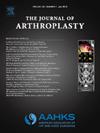同日历日出院失败:了解门诊全关节成形术后住院的原因。
IF 3.4
2区 医学
Q1 ORTHOPEDICS
引用次数: 0
摘要
背景:同日历日出院或门诊关节置换术的采用推动了护理路径协议的发展,以优化患者手术当天出院回家的成功率。然而,有时患者无法按计划当天出院,需要住院治疗。这会导致患者和医护人员的护理体验变差,并产生额外费用。因此,本研究旨在确定 "同日出院失败 "的发生率,报告这类患者的人口统计学特征,并找出同日出院失败的常见原因:方法: 我们对前瞻性维护的地区数据库进行了回顾性审查,该数据库收录了 1002 名同日出院的髋关节和膝关节置换术患者。未在 "同一日历日 "出院的患者被转为 "术后强化恢复 "路径。确定了 "术后强化恢复 "转换队列(n = 59),并报告了人口统计学、合并症和转换原因:在数据库中的 1002 名患者中,有 59 人(5.9%)未能实现 "同一日历日出院"。最常见的合并症是高血压(52.5%)、脊柱关节炎(22.0%)以及抑郁和焦虑(18.6%)。这些患者的中位住院时间为一晚。该组患者的 90 天再入院率为 5.1%。行动不便(16 例)、恶心和呕吐(14 例)以及社会环境(11 例)是患者转入术后加强康复路径的主要原因:结论:只要按照标准方案对患者进行评估和治疗,并根据个人需求进行调整,大多数患者都能成功实现 "同日历日出院 "关节置换术。即日出院关节置换术中遇到的常见障碍包括动员、恶心和呕吐以及社会环境。本文章由计算机程序翻译,如有差异,请以英文原文为准。
Failed Same-Calendar-Day Discharges: Understanding the Reasons for an Inpatient Stay Following Intended Outpatient Total Joint Arthroplasty
Background
The adoption of Same-Calendar-Day discharge, or outpatient, arthroplasty has driven the evolution of care pathway protocols to optimize success rates of discharging patients home on the day of surgery. There are, however, instances where patients are unable to discharge on the same day as intended and require a stay in the hospital. This can lead to a poorer patient and provider care experience as well as incur additional costs. This study, therefore, aimed to determine the incidence of “failed” Same-Calendar-Day discharge, report the demographics of this patient population, and identify common reasons for failure of Same-Calendar-Day discharge.
Methods
A retrospective review of a prospectively maintained regional database of 1,002 Same-Calendar-Day discharge hip and knee arthroplasty patients was performed. Patients not discharged on the Same-Calendar-Day were converted to an Enhanced Recovery After Surgery (ERAS) pathway. The ERAS conversion cohort (n = 59) was identified, and demographics, comorbidities, and reasons for conversion were reported.
Results
Of 1,002 patients in the database, 59 (5.9%) did not achieve Same-Calendar-Day discharge. The most common comorbidities were hypertension (52.5%), arthritis of the spine (22.0%), and depression and anxiety (18.6%). The median length of stay for these patients was 1 night. The all-cause 90-day readmission rate of this patient group was 5.1%. Difficulty mobilizing (n = 16), nausea and vomiting (n = 14), and social circumstances (n = 11) were the primary causes of patients being converted to ERAS pathways.
Conclusions
Same-Calendar-Day discharge arthroplasty can be successfully achieved in the majority of the patient group, provided patients are assessed and treated under standard protocols that are adapted to the individual needs. Common hurdles encountered in Same-Calendar-Day discharge arthroplasty are mobilization, nausea and vomiting, and social circumstances.
求助全文
通过发布文献求助,成功后即可免费获取论文全文。
去求助
来源期刊

Journal of Arthroplasty
医学-整形外科
CiteScore
7.00
自引率
20.00%
发文量
734
审稿时长
48 days
期刊介绍:
The Journal of Arthroplasty brings together the clinical and scientific foundations for joint replacement. This peer-reviewed journal publishes original research and manuscripts of the highest quality from all areas relating to joint replacement or the treatment of its complications, including those dealing with clinical series and experience, prosthetic design, biomechanics, biomaterials, metallurgy, biologic response to arthroplasty materials in vivo and in vitro.
 求助内容:
求助内容: 应助结果提醒方式:
应助结果提醒方式:


